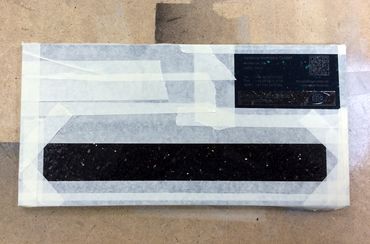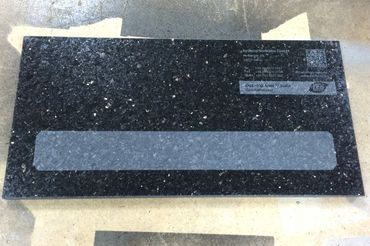Making steps non-slip on the outside
Once it happened, the anger is big. If someone slips on granite- or marble stairs, it can cause major damage. Then every homeowner will meditate on how the staircase can be defused. Specialized companies can make stone slip safely through laser treatment . Very often the chemical method is used as well. Here the natural stone is treated with various chemical compounds, like e.g. fluoric acid and that way blunted.Both methods are very expensive and can only be carried out by professionals.
Slip resistance on steps with vacuum blasting method
The vacuum blast method is an advanced method of making stair treads non-slip on the outside. This technique is often used in industrial and commercial environments, but can also be used in residential buildings to make stairs safer. Here's how to make stair treads non-slip using the vacuum blast method:
1. preparation and cleaning:
Before you start vacuum blasting, you need to make sure that the stair treads are clean and free of dirt, dust and other contaminants. Thorough cleaning is crucial as this will improve the adhesion and effectiveness of the process.
2. selection of the blasting material:
A variety of materials can be used for the vacuum blast method, which are applied to the stair treads in a non-slip manner. Common options include sand, granules, quartz grains or other abrasive particles. The choice of material depends on the requirements and the desired appearance.
3. set up a vacuum blast machine:
A vacuum blast machine is needed to spray the abrasive substance onto the stair treads. Make sure the machine is properly calibrated and adjusted to deliver the correct amount and intensity of abrasive.
4. blasting the steps:
The vacuum blasting machine is used to apply the selected blasting material to the stair treads. This is done at high speed and with precision, creating a non-slip surface. The blasting process should be carried out evenly and in several layers to ensure optimum adhesion.
5. Drying and sealing:
After blasting, the treated stair treads must be allowed to dry sufficiently. Depending on the type of blasting material used, this can take a few hours to a day. After drying, it is advisable to seal the surface to increase slip resistance and durability.
6. regular maintenance:
Non-slip stair treads made using the vacuum blast method generally require less maintenance than other methods. However, it is important to inspect the surface regularly and clean and seal as necessary to maintain its effectiveness.
The vacuum blast method is an effective way to make stair treads slip-resistant as it provides a durable and highly long-lasting solution. However, it is important to take the necessary safety precautions and seek professional assistance where necessary to ensure that the process is carried out properly.

